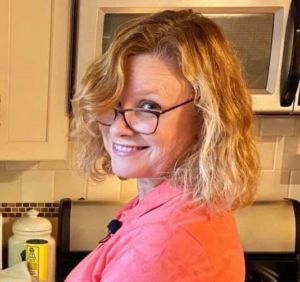
Trigger Warning: This story includes discussion of suicide.

This article is not about 988.
You’ve probably heard about the new national 988 Suicide and Crisis Lifeline number. It is super easy to remember, by design, and you’ll probably see it in all the places you used to see the crisis text number: restrooms, clinics, high school hallways.
The 988 number, the text number, and some other remarkably ingenious ways to intervene on behalf of a person contemplating taking their own life (have you heard about the Living Room program in Illinois?) will hopefully continue to save many lives.
But this article is not about those things. This article is about the people we love who are untouched by these efforts because they do not seek them. This article is about people like my husband, journalist Rick Dawson.
September is a busy time for me, deemed “National Suicide Prevention Month.” I’m frequently asked to speak about the suicide crisis in this country because. I. Just. Won’t. Shut. Up. About. It. It’s also the month of the anniversary of Rick’s death, the month of our wedding anniversary, as well as the month for some close family members’ birthdays. I work hard to make it a positive time.

The American Foundation for Suicide Prevention (their logo is the blue and white life preserver) keeps stats that are heartbreakingly easy to digest.* Here are just a few:
- Men die by suicide at a rate almost four times that of women
- Firearms accounted for more than 50% of suicide deaths
- The rate of suicide is highest among middle-aged white men
- Indiana outpaces the national average in deaths by suicide
Let’s talk about love, guilt, and never knowing.
Contrary to what we wish, in the thick of things, love does not conquer all. Love does not conquer intimate crises like depression, addiction, and other undiagnosed/unaddressed mental health issues. We cannot will our people into wellness simply through love. As with so many trials in our lives, they must be conquered from within, through resources sought out, and by the time you realize a loved one is struggling, they are likely deep in the throes of their crisis. Don’t give up.

Men are particularly affected by this, as the stats show, for many reasons, but they are not alone in the despair that leads people to suicide. But let’s face it, our American culture still values strength and independence over vulnerability and self-care — for now.
So many who’ve lost someone to suicide feel guilty. Did they do something wrong? Could they have saved their loved one if they’d just done something different? For the sake of discussion, we’re going to assume the relationship is one of love, and this is where we come to the never knowing.
Many people who live with the deep despair that leads to suicide will not talk about it. Men in this country do not discuss their emotions in the same ways women do, and the stats show it. There is no blame here, but there is an opportunity for change.
What can we do differently to change these outcomes? So many things!
Encourage connection, all the time. Isolation can lead to a lonely mental space that’s difficult to escape.
Encourage discussion without judgment. No one wants to feel like they’re failing.
Encourage accessing good mental healthcare. Telehealth options have made this easier than ever!
Encourage everyone in your life, but especially young people, to advocate for their own mental wellness and support research into mental health concerns. This is how we will change the stigma of mental health issues and save more lives.
*Statistics are for research year 2020.
Shannon Cagle Dawson is the director of grants and communications for Herron Classical Schools. She continues to support her long career in broadcast journalism through various projects such as the Indiana Debate Commission. She has a custom suicide awareness semicolon tattoo on one arm, large and eye-catching so that people will ask her about it and start a discussion.
All of our content—including this article—is completely free. However, we’d love it if you would please consider supporting our journalism with an Indy Maven membership.






